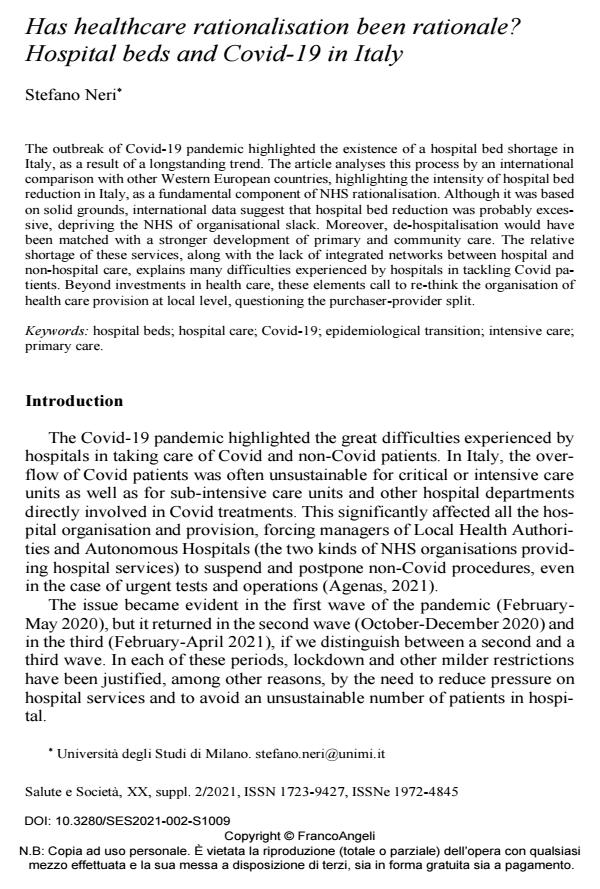Has healthcare rationalisation been rationale? Hospital beds and Covid-19 in Italy
Journal title SALUTE E SOCIETÀ
Author/s Stefano Neri
Publishing Year 2021 Issue 2021/suppl. 2
Language English Pages 19 P. 133-151 File size 554 KB
DOI 10.3280/SES2021-002-S1009
DOI is like a bar code for intellectual property: to have more infomation
click here
Below, you can see the article first page
If you want to buy this article in PDF format, you can do it, following the instructions to buy download credits

FrancoAngeli is member of Publishers International Linking Association, Inc (PILA), a not-for-profit association which run the CrossRef service enabling links to and from online scholarly content.
The outbreak of Covid-19 pandemic highlighted the existence of a hospital bed shortage in Italy, as a result of a longstanding trend. The article analyses this process by an international comparison with other Western European countries, highlighting the intensity of hospital bed reduction in Italy, as a fundamental component of NHS rationalisation. Although it was based on solid grounds, international data suggest that hospital bed reduction was probably excessive, depriving the NHS of organisational slack. Moreover, de-hospitalisation would have been matched with a stronger development of primary and community care. The relative shortage of these services, along with the lack of integrated networks between hospital and non-hospital care, explains many difficulties experienced by hospitals in tackling Covid patients. Beyond investments in health care, these elements call to re-think the organisation of health care provision at local level, questioning the purchaser-provider split.
Keywords: hospital beds; hospital care; Covid-19; epidemiological transition; intensive care; primary care.
- General practitioners in front of COVID-19: Italy in European comparative perspective Angela Genova, Simone Lombardini, in Frontiers in Sociology 1365517/2024
DOI: 10.3389/fsoc.2024.1365517 - The Italian National Health Service: Universalism, Marketization and the Fading of Territorialization Lavinia Bifulco, Stefano Neri, in Forum for Social Economics /2022 pp.192
DOI: 10.1080/07360932.2022.2036625
Stefano Neri, Has healthcare rationalisation been rationale? Hospital beds and Covid-19 in Italy in "SALUTE E SOCIETÀ" suppl. 2/2021, pp 133-151, DOI: 10.3280/SES2021-002-S1009